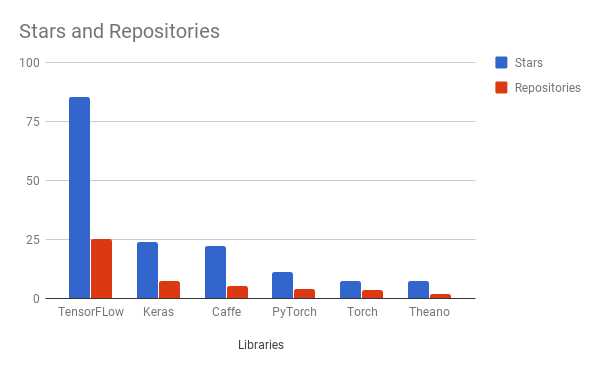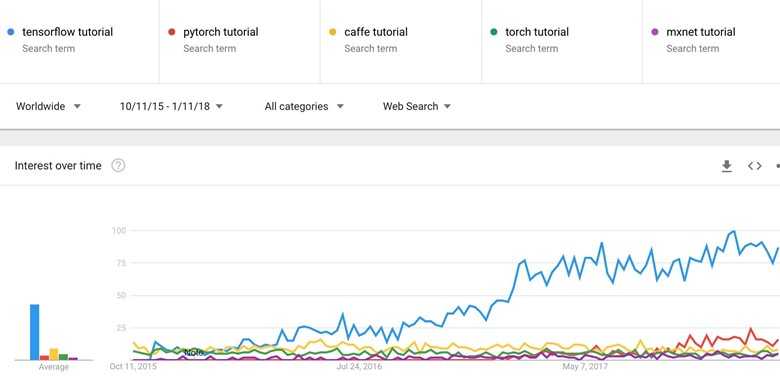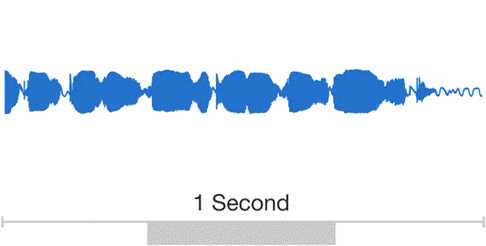标签:wav font list key solution theano stack community alt
TensorFlow was originally created by researchers at Google as a single infrastructure for machine learning in both production and research. Later, an implementation of it was open sourced under the Apache 2.0 License in November 2015. On the Tensorflow website, we see:
"TensorFlow? is an open source software library for
numerical computation using data flow graphs."
Note that only the implementation of TensorFlow that we see on GitHub is open-source. Google maintains its own internal version. It‘s said that Google did it because of the complicated relationships TensorFlow has with its other internal tools, not because Google is "hoarding good stuff". For the rest of this course, when we say TensorFlow, we are referring to the open source implementation.
The next key phrase we see is that TensorFlow is a "software library for Machine Intelligence". In the past year, it seems like every week, a company or another released their own deep learning library. For a non-exhaustive list of current deep learning libraries, please visit this link.
Given the plethora of these libraries, why did we choose Tensorflow to teach in this class? For a framework to be useful in production, it needs to be efficient, scalable, and maintainable. For research, the framework needs to have flexible operations that can be combined in novel ways. Alternative frameworks are either flexible enough for research but less scalable, such as Chainer and PyTorch, or scalable but less flexible, such as Caffe and MXNet. TensorFlow is both flexible and scalable, allowing users to streamline from research into production.
This unique position allowed TensorFlow to grow quickly. It‘s currently being used by big companies such as Google, OpenAI, NVIDIA, Intel, SAP, eBay, Airbus, Uber, Airbnb, Snap, Dropbox and startups alike. By the number of stars and related repositories on GitHub as of Jan 11, 2018, TensorFlow is by far the most popular machine learning library with more than 85.4k stars and 25.3k related repositories, twice as much as the total stars and related repositories of Caffe, PyTorch, Torch, and Theano combined. It‘s said that the rise of TensorFlow is the reason why the support for Theano was discontinued in September 2017.
 Demand for TensorFlow learning materials also surpasses that of any other framework.
Demand for TensorFlow learning materials also surpasses that of any other framework.

In summary, we chose TensorFlow because:
1. WaveNet: A Generative Model for Raw Audio (DeepMind, 2016)

2. Dermatologist-level classification of skin cancer with deep neural networks (Esteva, Kuprel, et al., Nature 2017)

3. Magenta (Google)
Use machine learning to create compelling art and music. Their projects are really fun! For example, please check out Draw Together with a Neural Network.

Below are some more examples of real world projects using TensorFlow, according to Google Research Blog, 2016:
I hope that after this class, you‘d be able to use TensorFlow to work on super cool projects like that!
There are many high level APIs built on top of TensorFlow. Some of the most popular APIs included Keras, TFLearn, and Sonnet. These high-level APIs allow for faster experimentation -- you can call a complex neural network models in a few lines of code. The APIs have attracted a sizeable number of users. You should definitely check them out, and we might briefly go over these high-level APIs in class if time permits.
However, the primary purpose of TensorFlow is not to provide out-of-the-box machine learning solutions. Instead, TensorFlow provides an extensive suite of functions and classes that allow users to define models from scratch. This is more complicated, but offers much more flexibility. You can build almost any architecture you can think of in TensorFlow.
We won‘t be using any textbook for this class. The library is changing so fast that it‘s hard for any book to keep up. We will be using mainly lecture notes and lecture slides. There are several resources that you might want to refer to become fluent in TensorFlow.
TensorFlow official sample models
StackOverflow should be your first port of call should you run into any problem with TensorFlow
There are also several introductory books on TensorFlow.
The first thing we need to understand about TensorFlow is its computation graph approach. Any TensorFlow program consists of two phases:
Phase 1: assemble a graph
Phase 2: use a session to execute operations in the graph.
Note that this might change in the future with TensorFlow‘s eager mode, currently experimental.
It‘s best to explain this with graphs. Please refer to the slides of the first lecture (from slide 24) to learn about TensorFlow‘s computation graph approach, tensors, subgraphs, and sessions.
标签:wav font list key solution theano stack community alt
原文地址:https://www.cnblogs.com/kexinxin/p/10162816.html